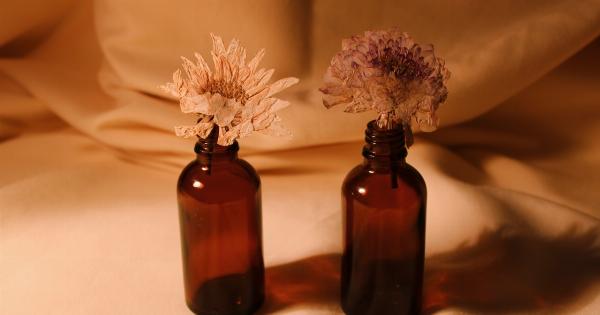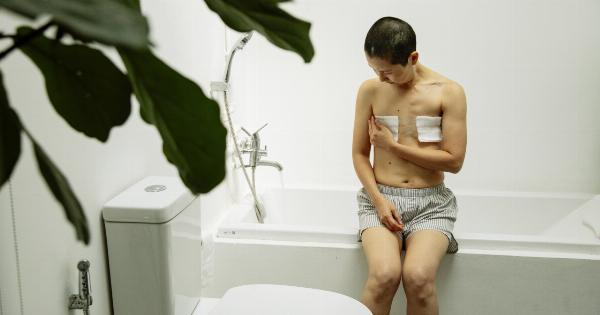Hand dermatitis is a common skin condition that affects many individuals across different age groups. It can be caused by various factors such as exposure to irritants, allergic reactions, or genetic predisposition.
Recognizing the different forms of hand dermatitis is crucial in order to properly diagnose and treat the condition. In this article, we will explore the various types of hand dermatitis and their characteristics.
1. Irritant Contact Dermatitis
Irritant contact dermatitis is the most common form of hand dermatitis. It occurs when the skin comes into contact with irritants such as chemicals, soaps, detergents, or even water.
Individuals with this type of dermatitis experience dry, red, and inflamed skin. It can also cause symptoms like itching, burning sensation, and the development of small blisters or cracks. Irritant contact dermatitis is often found in occupations that involve frequent exposure to harsh chemicals or wet work.
2. Allergic Contact Dermatitis
Allergic contact dermatitis is a type of hand dermatitis that occurs as a result of an allergic reaction to a specific substance.
The skin becomes inflamed and irritated when it comes into contact with allergens like certain metals, latex, fragrances, or plants such as poison ivy. The symptoms include redness, itching, and the development of blisters or oozing lesions. Unlike irritant contact dermatitis, allergic contact dermatitis requires previous exposure to the allergen for a sensitization reaction to occur.
3. Atopic Hand Dermatitis
Atopic hand dermatitis, also known as eczema, is a chronic form of hand dermatitis that is often associated with a personal or family history of allergies, asthma, or hay fever.
This condition typically begins in childhood and manifests as dry, itchy, and scaly skin on the hands. Individuals with atopic hand dermatitis may also experience periods of intense flare-ups and remission. The use of moisturizers and topical steroids is commonly recommended to manage this chronic condition.
4. Dyshidrotic Dermatitis
Dyshidrotic dermatitis is a type of hand dermatitis characterized by the development of small, itchy blisters on the palms, sides, and soles of the feet.
The exact cause of this condition is unknown, but it is believed to be associated with factors like allergies, stress, and exposure to certain metals. The blisters can be painful and may lead to the peeling of the skin. Topical corticosteroids, antihistamines, and the avoidance of known triggers are commonly recommended for managing dyshidrotic dermatitis.
5. Pompholyx
Pompholyx, also known as dyshidrotic eczema, is a type of hand dermatitis characterized by the development of deep-seated blisters on the palms, sides of the fingers, and soles of the feet.
The exact cause of pompholyx is unknown; however, it is believed to be associated with factors like stress, allergies, and excessive sweating. The blisters can be intensely itchy and may result in the thickening of the skin over time. Topical corticosteroids, moisturizers, and avoiding triggers like stress and irritants are commonly recommended treatments for pompholyx.
6. Nummular Dermatitis
Nummular dermatitis, also referred to as discoid eczema, is a type of hand dermatitis characterized by the development of coin-shaped or oval patches of inflamed, itchy skin.
The exact cause of nummular dermatitis is unknown, but it is believed to be associated with dry skin, irritants, and changes in temperature. The patches can be red, scaly, and may weep or crust over. Avoiding known triggers, moisturizing the skin, and applying topical corticosteroids are commonly recommended treatments for nummular dermatitis.
7. Seborrheic Dermatitis
Seborrheic dermatitis is a common skin condition that can affect various parts of the body, including the hands. It is characterized by red, scaly, and inflamed skin that may appear greasy or oily.
Seborrheic dermatitis is believed to be associated with the overgrowth of yeast on the skin, hormonal factors, and genetic predisposition. Treatment for seborrheic dermatitis often involves the use of medicated shampoos or creams containing antifungal agents, corticosteroids, or salicylic acid.
8. Occupational Dermatitis
Occupational dermatitis refers to hand dermatitis that is specifically caused or worsened by one’s work environment. It can occur due to exposure to chemicals, allergens, or physical factors like friction or pressure.
Jobs that involve frequent contact with irritants or allergens, such as healthcare professionals or hairdressers, are at a higher risk of developing occupational dermatitis. Proper protective measures, like wearing gloves or using barrier creams, are essential for preventing and managing this type of dermatitis.
9. Stasis Dermatitis
Stasis dermatitis, also known as venous eczema, is a form of hand dermatitis that occurs as a result of poor circulation in the legs and feet.
The impaired blood flow can lead to the pooling of blood and fluid, causing the skin to become inflamed, itchy, and swollen. Individuals with stasis dermatitis may also experience skin discoloration, ulcers, and the development of varicose veins.
Compression stockings, leg elevation, and the treatment of underlying venous insufficiency are commonly recommended for managing stasis dermatitis.
10. Acral Peeling Skin Syndrome
Acral peeling skin syndrome is a rare genetic disorder characterized by the recurrent peeling of the skin, particularly on the hands and feet.
It is usually present from birth and can cause the skin to peel in layers, exposing the raw, tender skin beneath. This condition is caused by a mutation in a specific gene that affects the formation of the skin’s outer layer.
While there is no cure for acral peeling skin syndrome, treatment usually involves keeping the affected areas moisturized and protected.































